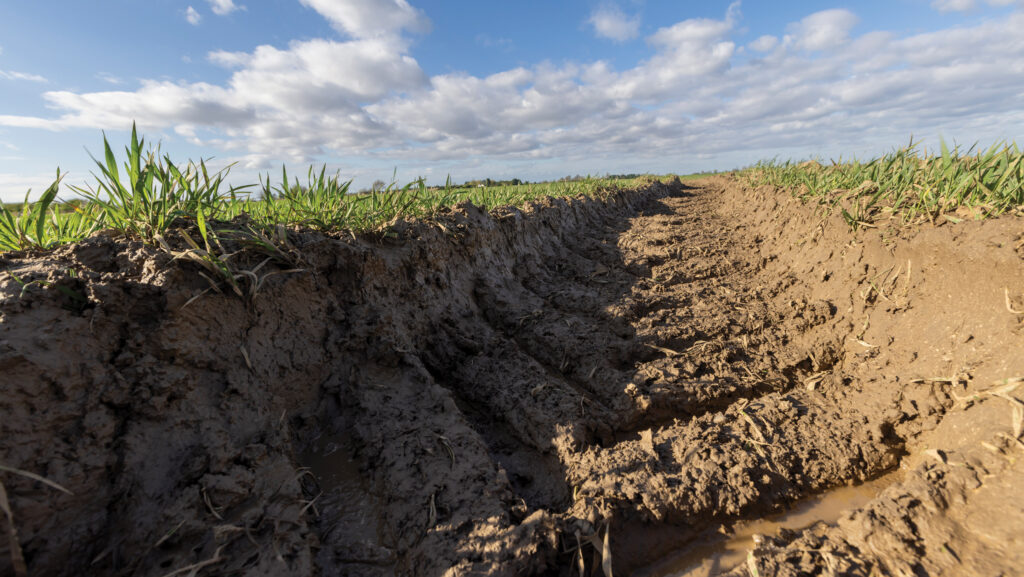How root systems are damaged by surface compaction
 © GNP
© GNP Compaction is the hidden killer of root systems, and that can have a profound effect on soil health as well as crop performance, an audience at Groundswell heard.
Surface compaction could reduce root systems by up to 95%, explained Canadian agricultural engineer Odette Ménard.
“80-90% of the root system is typically in the top 30cm of the soil. If you’re lacking 90% of these roots to begin with, you won’t have a root system that goes deeper.”
In a good soil, wheat crops can have roots that reach 1m down into the soil. “That can be about 5% of the root system,” Odette said.
“In a drought situation, that 5% of the root system can provide up to 20% of the water the plant needs.”
See also: Notts Monitor Farm sees benefits of reduced cultivations
Surface compaction
Surface compaction is directly related to tyre pressure, while subsoil compaction is linked to weight per wheel.
“We need to lower air pressures in tyres to protect the soil surface, and find ways to lower weight per wheel, so it is not exerting any more than 0.5 bar at 50cm depth,” she advised.
Tyre pressures should ideally be no more than 0.9 bar, although tyre type and situation could change that, while weight per wheel should be a maximum of 3.5t/wheel, she said.
Diminishing weight per wheel could be achieved through dual axles rather than a single axle, she noted.
It is also important, where possible, to travel in the right conditions. However, that does not necessarily mean in the dry.
“The weight of the machine needs to be supported by a certain volume of soil. If soil is very dry, its bulk density will increase, leaving less space for the root system and lowering water holding capacity.”
When soil was too wet, damage was more likely deeper in the soil profile.
“When you go into the field, ideally, the machine doesn’t leave any mark, but the soil will go all over the tyre tread,” she explained.
CROP concept
Compaction is the enemy of at least three, if not all four key components to an effective functioning soil, as described by her CROP concept – cover, roots, oxygen and porosity.
She noted that all of those components needed to work in concert.
When the soil is covered, it reduces soil capping, helping plant germination and improving root growth.
A good root system encourages more microbial life, resulting in greater glomalin production, which was crucial in creating the porosity that improved soil structure, she explained.

